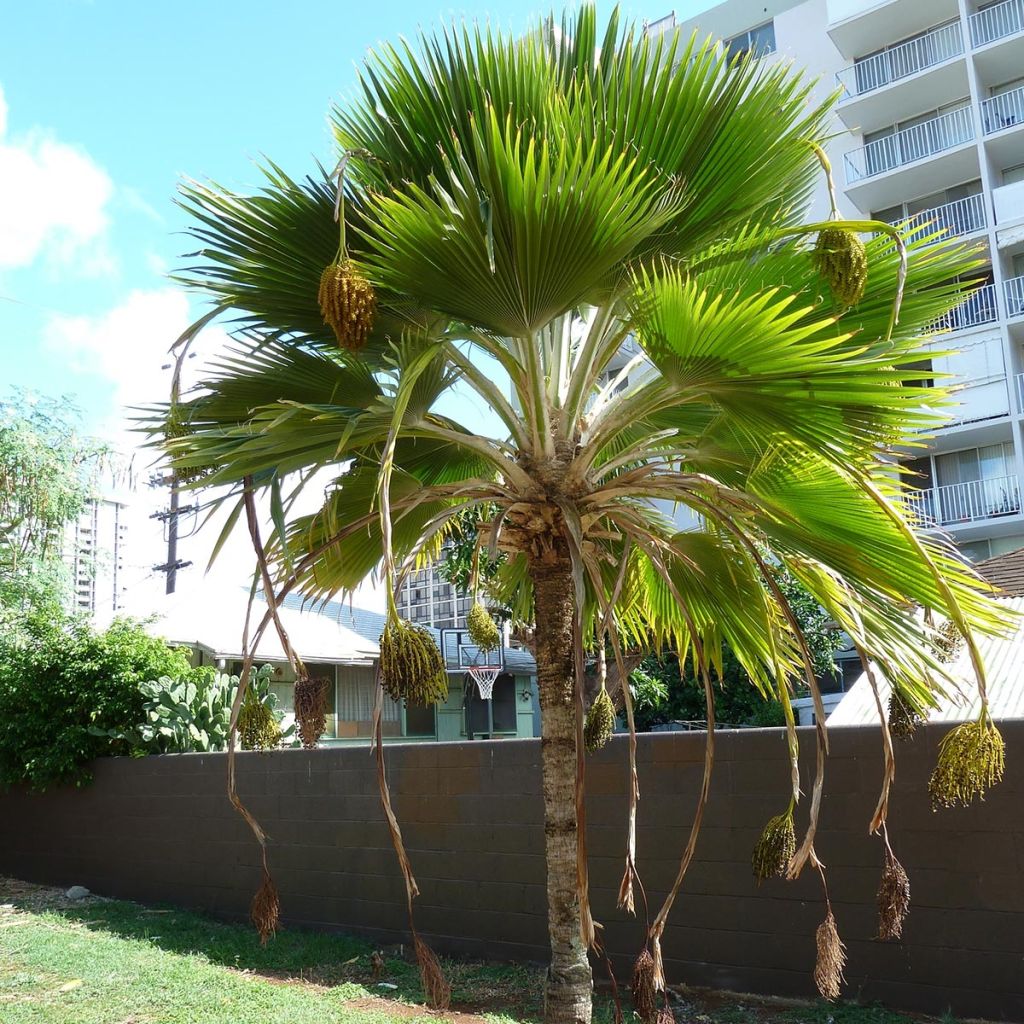

Pritchardia thurstonii - Palmier
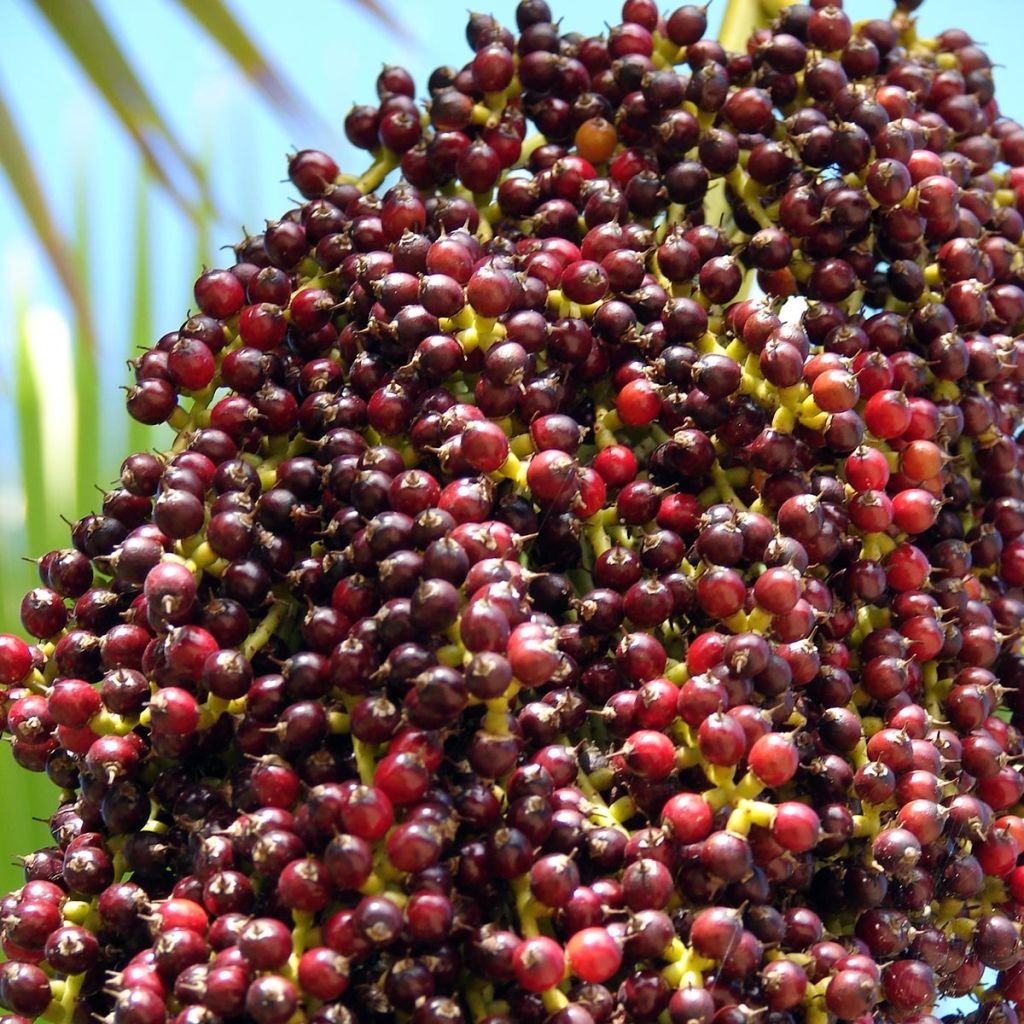

Pritchardia thurstonii - Palmier
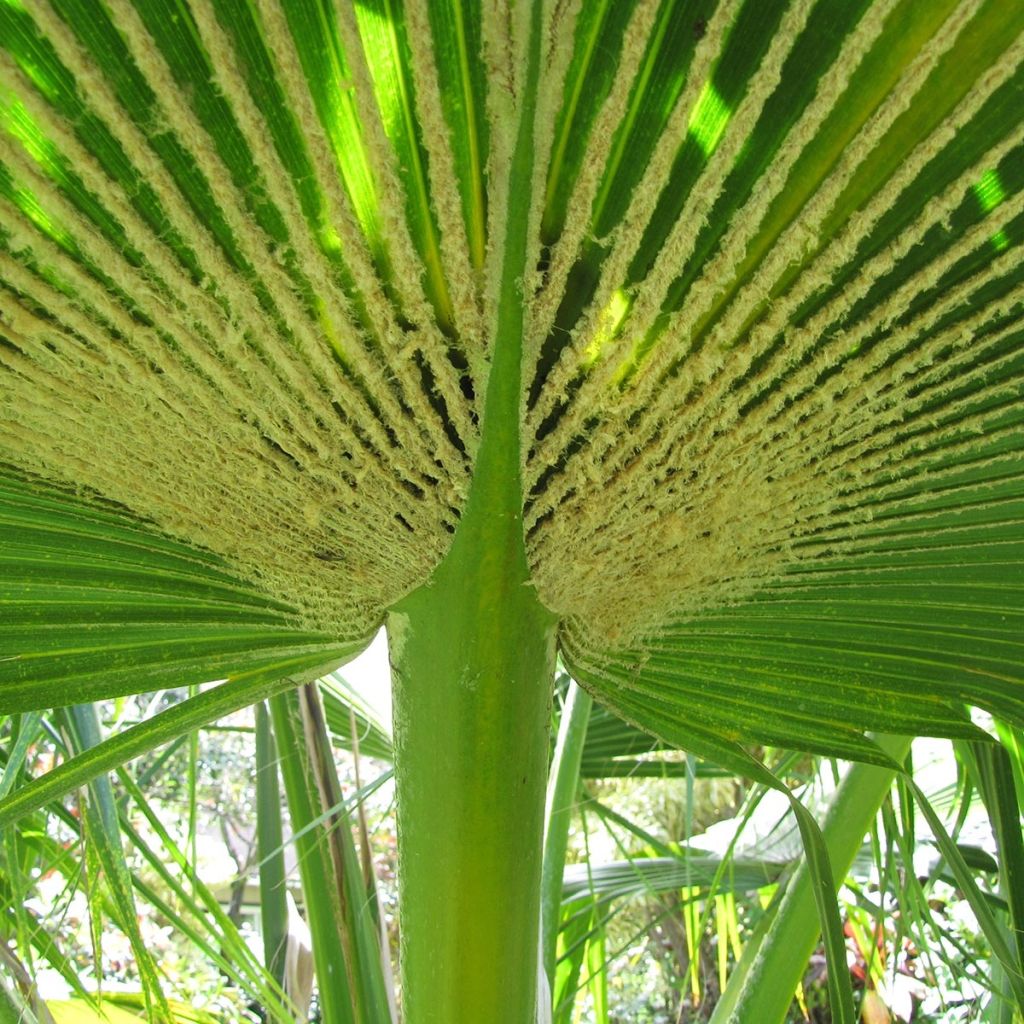

Pritchardia thurstonii - Palmier
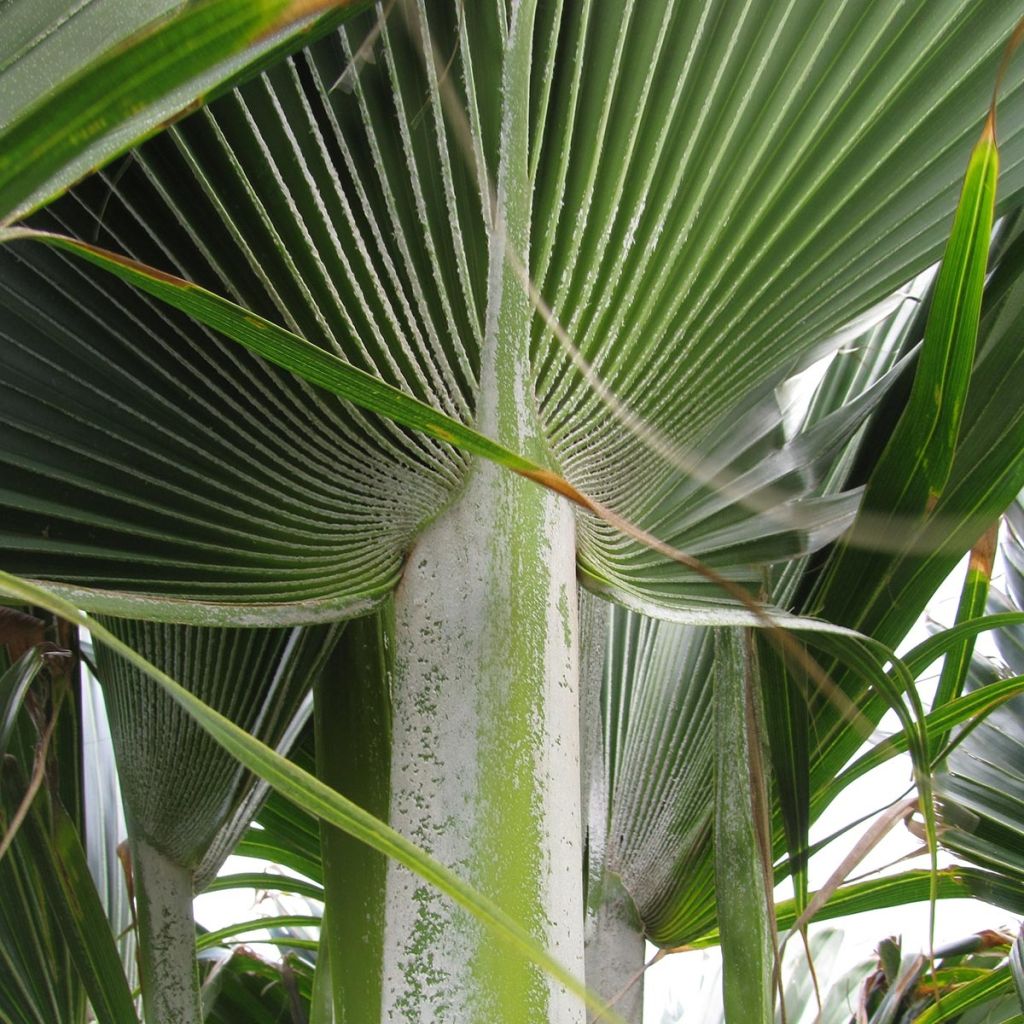

Pritchardia thurstonii - Palmier
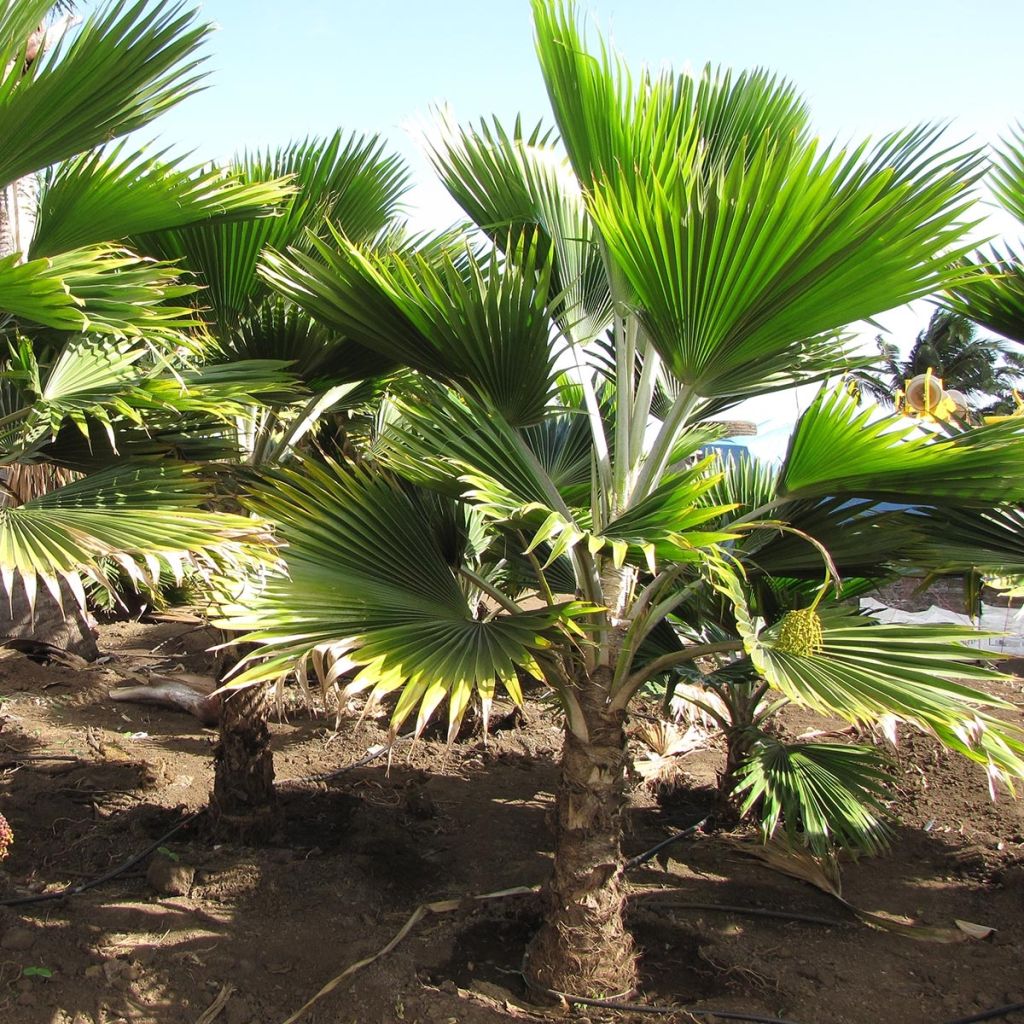

Pritchardia thurstonii - Palmier
Pritchardia thurstonii - Pritchardia Palm
Pritchardia thurstonii
Lau Fan Palm, Pritchardia Palm
This plant carries a 24 months recovery warranty
More information
We guarantee the quality of our plants for a full growing cycle, and will replace at our expense any plant that fails to recover under normal climatic and planting conditions.
From €5.90 for pickup delivery and €6.90 for home delivery
Express home delivery from €8.90.
Does this plant fit my garden?
Set up your Plantfit profile →
Description
Pritchardia thurstonii is an extraordinary palm tree native to the most remote islands of the Pacific, and one of the easiest to cultivate as long as it has a warm and humid environment. This species has beautiful foliage, composed of large fan-shaped leaves, magnificently rigid and pleated like an accordion. Similar to the Pritchardia pacifica, this palm tree stands out with slightly smaller growth, but also with its astonishing cone-shaped inflorescences carried at the end of long peduncles that emerge widely from the foliage. Frost-sensitive, this Pritchardia is exclusively grown in containers in our climates, allowing it to be protected from winter frosts. A top-quality specimen for tropical plant enthusiasts!
Pritchardia thurstonii belongs to the family of Arecaceae. It originates from the Fiji and Tonga islands, in the southwestern Pacific Ocean. It is found in humid forests, anchored in limestone and coral soils, on slopes, cliffs, and among rocks at low altitudes. This species of humid tropical climates perishes below -1°C (30.2°F), but adapts well to indoor cultivation as long as winter temperatures range between 10 and 15°C (50 and 59°F) and the atmosphere remains humid. Young plants take some time to establish themselves, then growth accelerates. In its native islands, Pritchardia thurstonii can reach a height of 8m (26ft) when grown in the ground, but it will hardly produce a trunk and will not exceed 1.80m (6ft) to 2m (7ft) in all directions when grown in containers, indoors, or in a greenhouse.
This Lau Fan Palm develops a unique trunk called a stipe, almost devoid of leaf scars, fairly thin, and light grey in colour. At the end of this stipe, a beautiful regular and rounded crown of leaves develops. It is composed of large three-quarter circular fan-shaped leaves, which are called costapalmate, measuring up to 80cm (32in) in diameter. Their margin is divided into numerous short, very rigid and erect segments, with a pleated appearance. They are a medium green colour and are covered with a thin waxy film that gives them a shiny appearance. The petioles that bear the leaves, as well as the veins, are devoid of thorns but have some fibres on the margin. Flowering occurs in summer on mature plants aged 10 to 15 years, under favourable growing conditions. It takes the form of long pedunculated, arched inflorescences that extend well beyond the foliage. Each one is composed of numerous small yellowish flowers. After pollination, small globose fruits, 7mm (1in) in diameter, form and turn black when ripe. Each fruit contains a seed that easily germinates in a tropical environment, both warm and humid.
The Pritchardia Palm is an architectural plant that will make a statement on a veranda, in a temperate greenhouse, or in a very bright and minimally heated room. It tolerates container cultivation well and can be taken out onto the patio or balcony from May to September. Like all palm trees, it is difficult to associate due to its strong personality: reserve a corner of a swimming pool or a prominent place on the patio, initially exposing it to partial shade to gradually acclimate it to the sun. Surround it with graphic and colourful Phormium, precise and geometric Agaves, or perhaps Cordyline.
Report an error about the product description
Pritchardia thurstonii - Pritchardia Palm in pictures
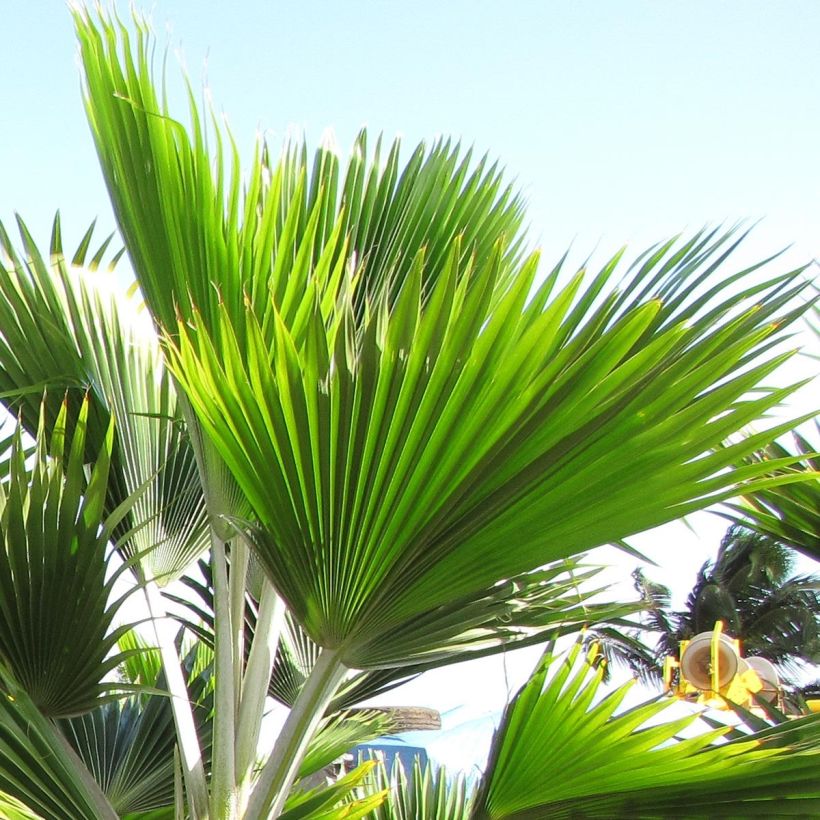

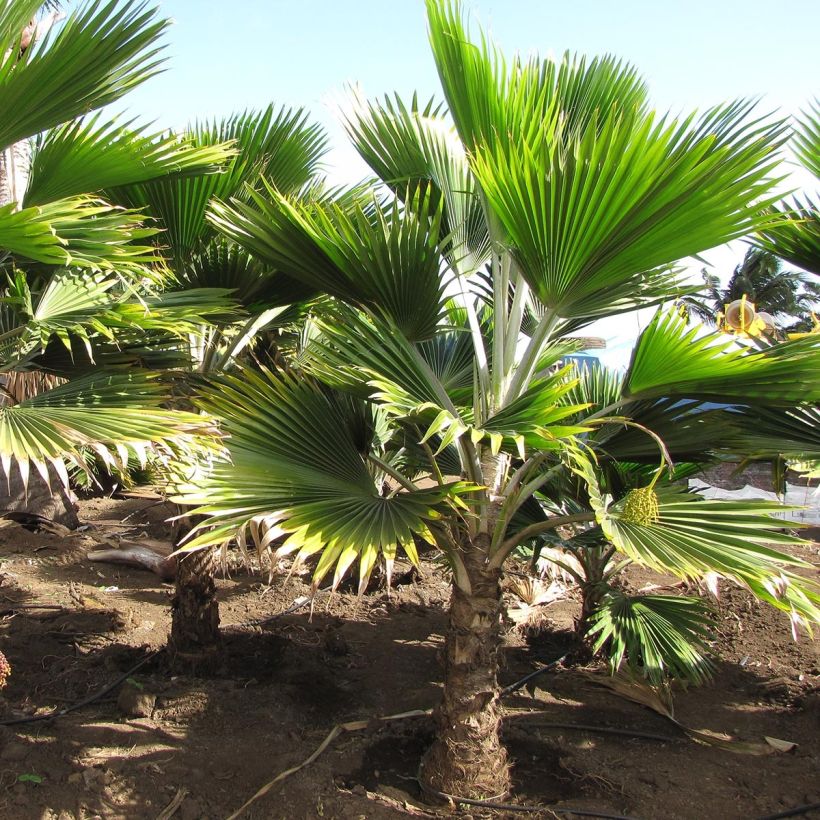

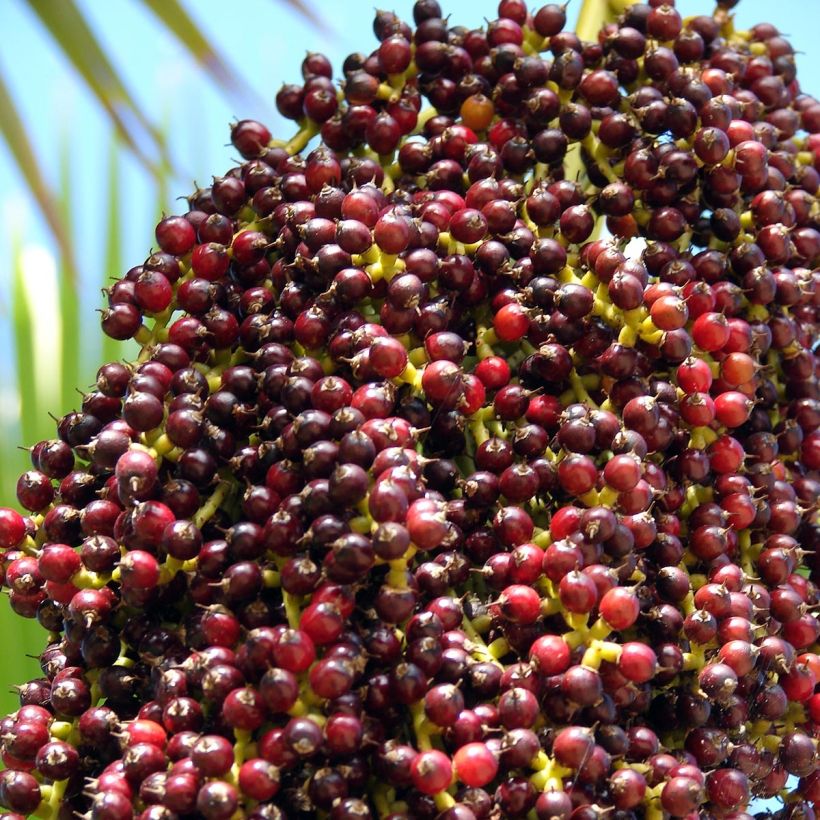

Plant habit
Flowering
Foliage
Botanical data
Pritchardia
thurstonii
Arecaceae
Lau Fan Palm, Pritchardia Palm
Oceania
Planting and care
This Pritchardia thurstonii palm tree is a tender plant that thrives in tropical environments and perishes below -1°C (30.2°F), but adapts well to container or large pot cultivation. Young plants are sensitive to direct sunlight, while mature specimens tolerate sunlight very well. It prefers limestone soils that are well-drained and kept moist throughout the growing season, from spring until autumn. In winter, watering should be reduced.
Pot cultivation:
Choose a large pot or a perforated bottom container with a capacity of 40 to 60 litres. Prepare a mixture consisting of 25% ericaceous soil, 50% compost or humus and 25% sand. Add some crushed bonemeal. Mix well. Place a drainage layer at the bottom of the container (clay balls, gravel, broken clay pots...) and then partially fill it. Place your palm tree on the mixture, so that the collar (the area where the roots originate) does not exceed the pot's rim but is also not buried too deep. Add the rest of the mixture around the root ball, firmly compacting it. Water in several stages to thoroughly saturate the substrate and remove any air pockets. Place your palm tree in a very bright location, while avoiding excessive sunlight. In winter, the optimal temperature in the greenhouse or veranda should be between 10 and 15 °C. Regularly mist the foliage to provide humidity. Clean the leaves with a sponge to remove dust. Outdoors, initially place it in partial shade to protect its foliage. After two weeks in partial shade, gradually expose it to sunlight. Apply a liquid fertilizer for green plants once a month from March to August.
Planting period
Intended location
Care
This item has not been reviewed yet - be the first to leave a review about it.
Haven't found what you were looking for?
Hardiness is the lowest winter temperature a plant can endure without suffering serious damage or even dying. However, hardiness is affected by location (a sheltered area, such as a patio), protection (winter cover) and soil type (hardiness is improved by well-drained soil).

Photo Sharing Terms & Conditions
In order to encourage gardeners to interact and share their experiences, Promesse de fleurs offers various media enabling content to be uploaded onto its Site - in particular via the ‘Photo sharing’ module.
The User agrees to refrain from:
- Posting any content that is illegal, prejudicial, insulting, racist, inciteful to hatred, revisionist, contrary to public decency, that infringes on privacy or on the privacy rights of third parties, in particular the publicity rights of persons and goods, intellectual property rights, or the right to privacy.
- Submitting content on behalf of a third party;
- Impersonate the identity of a third party and/or publish any personal information about a third party;
In general, the User undertakes to refrain from any unethical behaviour.
All Content (in particular text, comments, files, images, photos, videos, creative works, etc.), which may be subject to property or intellectual property rights, image or other private rights, shall remain the property of the User, subject to the limited rights granted by the terms of the licence granted by Promesse de fleurs as stated below. Users are at liberty to publish or not to publish such Content on the Site, notably via the ‘Photo Sharing’ facility, and accept that this Content shall be made public and freely accessible, notably on the Internet.
Users further acknowledge, undertake to have ,and guarantee that they hold all necessary rights and permissions to publish such material on the Site, in particular with regard to the legislation in force pertaining to any privacy, property, intellectual property, image, or contractual rights, or rights of any other nature. By publishing such Content on the Site, Users acknowledge accepting full liability as publishers of the Content within the meaning of the law, and grant Promesse de fleurs, free of charge, an inclusive, worldwide licence for the said Content for the entire duration of its publication, including all reproduction, representation, up/downloading, displaying, performing, transmission, and storage rights.
Users also grant permission for their name to be linked to the Content and accept that this link may not always be made available.
By engaging in posting material, Users consent to their Content becoming automatically accessible on the Internet, in particular on other sites and/or blogs and/or web pages of the Promesse de fleurs site, including in particular social pages and the Promesse de fleurs catalogue.
Users may secure the removal of entrusted content free of charge by issuing a simple request via our contact form.
The flowering period indicated on our website applies to countries and regions located in USDA zone 8 (France, the United Kingdom, Ireland, the Netherlands, etc.)
It will vary according to where you live:
- In zones 9 to 10 (Italy, Spain, Greece, etc.), flowering will occur about 2 to 4 weeks earlier.
- In zones 6 to 7 (Germany, Poland, Slovenia, and lower mountainous regions), flowering will be delayed by 2 to 3 weeks.
- In zone 5 (Central Europe, Scandinavia), blooming will be delayed by 3 to 5 weeks.
In temperate climates, pruning of spring-flowering shrubs (forsythia, spireas, etc.) should be done just after flowering.
Pruning of summer-flowering shrubs (Indian Lilac, Perovskia, etc.) can be done in winter or spring.
In cold regions as well as with frost-sensitive plants, avoid pruning too early when severe frosts may still occur.
The planting period indicated on our website applies to countries and regions located in USDA zone 8 (France, United Kingdom, Ireland, Netherlands).
It will vary according to where you live:
- In Mediterranean zones (Marseille, Madrid, Milan, etc.), autumn and winter are the best planting periods.
- In continental zones (Strasbourg, Munich, Vienna, etc.), delay planting by 2 to 3 weeks in spring and bring it forward by 2 to 4 weeks in autumn.
- In mountainous regions (the Alps, Pyrenees, Carpathians, etc.), it is best to plant in late spring (May-June) or late summer (August-September).
The harvesting period indicated on our website applies to countries and regions in USDA zone 8 (France, England, Ireland, the Netherlands).
In colder areas (Scandinavia, Poland, Austria...) fruit and vegetable harvests are likely to be delayed by 3-4 weeks.
In warmer areas (Italy, Spain, Greece, etc.), harvesting will probably take place earlier, depending on weather conditions.
The sowing periods indicated on our website apply to countries and regions within USDA Zone 8 (France, UK, Ireland, Netherlands).
In colder areas (Scandinavia, Poland, Austria...), delay any outdoor sowing by 3-4 weeks, or sow under glass.
In warmer climes (Italy, Spain, Greece, etc.), bring outdoor sowing forward by a few weeks.


































